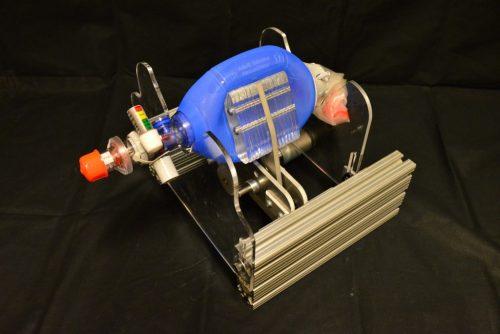- makeITcircular 2024 content launched – Part of Maker Faire Rome 2024Posted 1 month ago
- Application For Maker Faire Rome 2024: Deadline June 20thPosted 3 months ago
- Building a 3D Digital Clock with ArduinoPosted 8 months ago
- Creating a controller for Minecraft with realistic body movements using ArduinoPosted 8 months ago
- Snowflake with ArduinoPosted 9 months ago
- Holographic Christmas TreePosted 9 months ago
- Segstick: Build Your Own Self-Balancing Vehicle in Just 2 Days with ArduinoPosted 9 months ago
- ZSWatch: An Open-Source Smartwatch Project Based on the Zephyr Operating SystemPosted 10 months ago
- What is IoT and which devices to usePosted 10 months ago
- Maker Faire Rome Unveils Thrilling “Padel Smash Future” Pavilion for Sports EnthusiastsPosted 11 months ago
MIT Emergency Ventilator (E-Vent) Project

We are one of several teams who recognized the challenges faced by Italian physicians, and are working to find a solution to the anticipated global lack of ventilators. In the US alone, the COVID-19 pandemic may cause ventilator shortages on the order of 300,000-700,000 units (CDC Pandemic Response Plans). These could present on a national scale within weeks, and are already being felt in certain areas. An increase in conventional ventilator production is very likely to fall short and with significant associated cost (paywall warning).
Almost every bed in a hospital has a manual resuscitator (Ambu-Bag) nearby, available in the event of a rapid response or code where healthcare workers maintain oxygenation by squeezing the bag. Automating this appears to be the simplest strategy that satisfies the need for low-cost mechanical ventilation, with the ability to be rapidly manufactured in large quantities. However, doing this safely is not trivial.
Use of a bag-valve mask (BVM) in emergency situations is not a new concept. A portable ventilator utilizing an ambu-bag was introduced in 2010 by a student team in the MIT class 2.75 Medical Device Design (original paper here and news story here), but did not move past the prototype stage. Around the same time, a team from Stanford developed a lower-cost ventilator for emergency stockpiles and the developing world. It looks similar to a modern ICU ventilator (Onebreath), but “production for US hospitals would start [in] about 11 months”, making it “a second wave solution” (MIT Tech Review Article). Last year, the AMBU® Bag concept was re-visited by two student teams, one from Rice university and another Boston-based team who won MIT Sloan’s Healthcare prize (MIT News: Umbilizer). Other teams currently working on this challenge can be found linked on our “Additional Resources” page.















